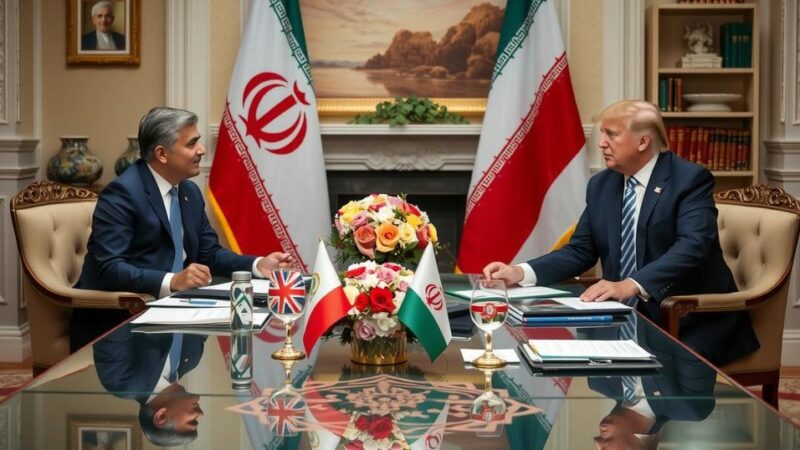Efforts for a ceasefire and hostage release between Israel and Hamas are ongoing, with new rounds of mediated negotiations reflecting cautious optimism. A phased plan has been proposed to exchange hostages for Palestinian prisoners, while key challenges, including military presence and governance in Gaza, persist, complicating the negotiation process.
Recent diplomatic efforts to establish a ceasefire and facilitate the release of hostages between Israel and Hamas continue to face significant challenges. Yet, hope remains as negotiations mediated by Qatar, Egypt, and the United States have prompted cautious optimism from Washington regarding an imminent agreement. President-elect Donald Trump’s insistence on reaching a deal before he assumes office on January 20 may influence ongoing discussions. Sources suggest that Hamas, aiming to ease its current isolation, seeks to finalize a deal before the year concludes, viewing it as a timely gesture amidst the holiday season.
Following the death of prominent Hamas leader Yahya Sinwar, a shift towards more pragmatic leadership may help guide the current negotiations. A high-ranking Hamas official disclosed that the talks are in the final stages, awaiting official announcement from mediating parties. Regardless, Israeli representatives have refrained from providing detailed comments on the evolving situation.
The proposed framework for agreement entails a phased approach toward ceasefire and hostage release. The first six-week phase involves the release of civilian hostages and female soldiers by Hamas in exchange for hundreds of Palestinian prisoners. As a part of this phase, Israel is expected to withdraw its military presence from specific border corridors, alongside facilitating the return of displaced persons to Gaza City. Subsequent phases delineate further exchanges and military adjustments, aiming toward full reconstruction.
However, substantial hurdles remain, particularly regarding Israel’s long-term troop presence in the Philadelphi Corridor. Israeli Prime Minister Benjamin Netanyahu has expressed firm opposition to a total withdrawal, declaring that the country will retain control of essential border territories. Additionally, the governance of Gaza post-conflict remains a highly contested topic, as Israel opposes Hamas’s potential resurgence in authority.
With only a short ceasefire established at the end of 2023 amid ongoing negotiations, the pathway to a long-term resolution continues to be fraught with obstacles, making the outcome of current efforts to broker a stable peace uncertain yet critical.
The ongoing conflict between Israel and Hamas has seen numerous attempts at brokering peace and establishing ceasefires. Since the outbreak of hostilities intensified following Hamas’s October 7, 2023 attack on Israel, international mediators have engaged in indirect negotiations to resolve the ongoing crisis. The impact of regional politics, particularly the relationships among Palestinian factions and their allies, plays a crucial role in shaping these discussions. Despite a brief truce at the end of 2023, various sticking points persist, notably concerning the release of hostages, military presence, and governance in Gaza following the conflict.
In conclusion, while there is cautious optimism surrounding the latest round of negotiations between Israel and Hamas, multiple significant obstacles remain. The proposed phased solution seeks to address hostages and military withdrawals, yet divergent views on long-term governance and military presence complicate progress. Continued diplomatic engagement from regional and international stakeholders is paramount in navigating the intricacies of this enduring conflict and achieving a lasting resolution.
Original Source: www.arabnews.com







